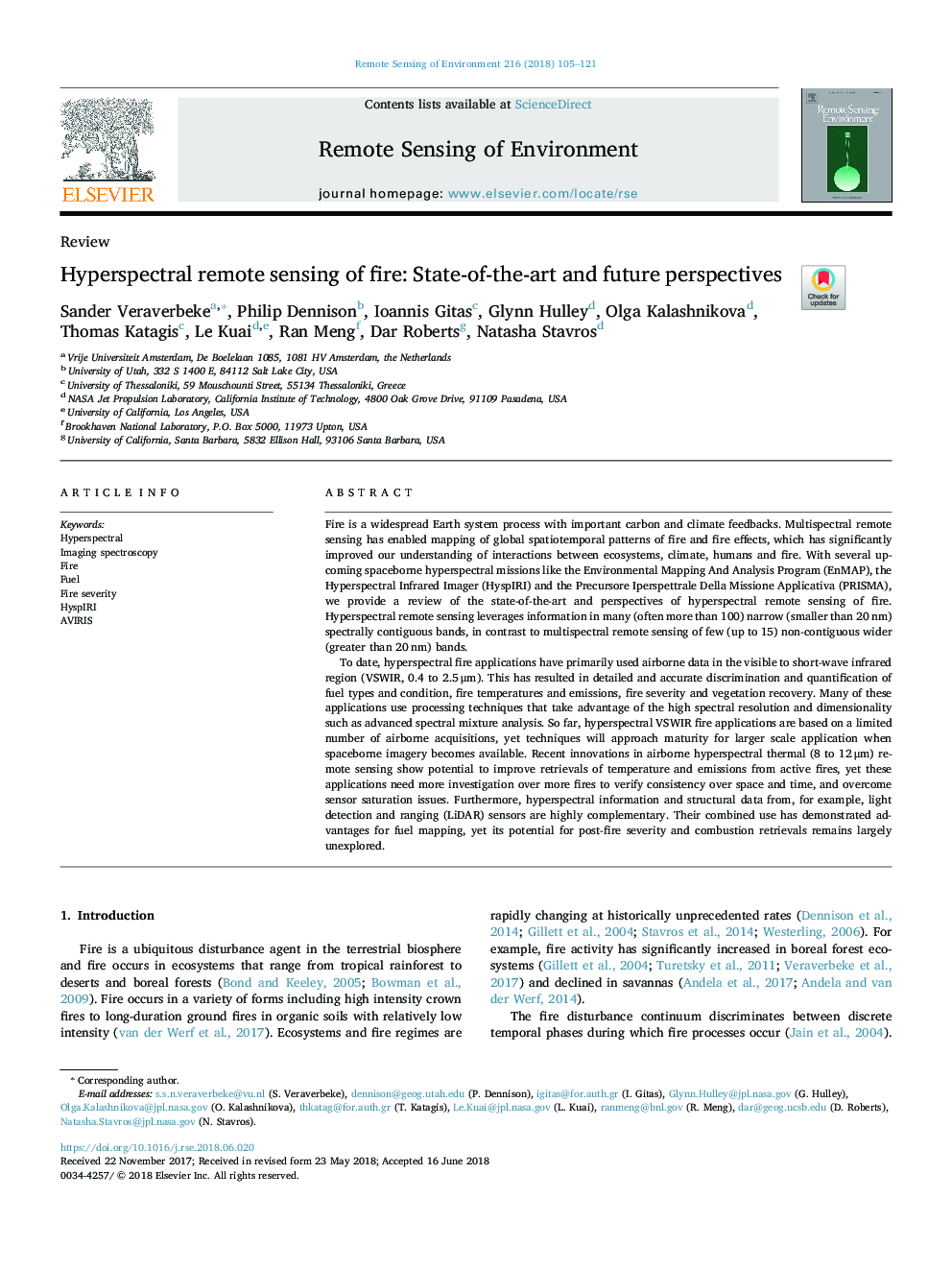| Article ID | Journal | Published Year | Pages | File Type |
|---|---|---|---|---|
| 8866405 | Remote Sensing of Environment | 2018 | 17 Pages |
Abstract
To date, hyperspectral fire applications have primarily used airborne data in the visible to short-wave infrared region (VSWIR, 0.4 to 2.5â¯Î¼m). This has resulted in detailed and accurate discrimination and quantification of fuel types and condition, fire temperatures and emissions, fire severity and vegetation recovery. Many of these applications use processing techniques that take advantage of the high spectral resolution and dimensionality such as advanced spectral mixture analysis. So far, hyperspectral VSWIR fire applications are based on a limited number of airborne acquisitions, yet techniques will approach maturity for larger scale application when spaceborne imagery becomes available. Recent innovations in airborne hyperspectral thermal (8 to 12â¯Î¼m) remote sensing show potential to improve retrievals of temperature and emissions from active fires, yet these applications need more investigation over more fires to verify consistency over space and time, and overcome sensor saturation issues. Furthermore, hyperspectral information and structural data from, for example, light detection and ranging (LiDAR) sensors are highly complementary. Their combined use has demonstrated advantages for fuel mapping, yet its potential for post-fire severity and combustion retrievals remains largely unexplored.
Related Topics
Physical Sciences and Engineering
Earth and Planetary Sciences
Computers in Earth Sciences
Authors
Sander Veraverbeke, Philip Dennison, Ioannis Gitas, Glynn Hulley, Olga Kalashnikova, Thomas Katagis, Le Kuai, Ran Meng, Dar Roberts, Natasha Stavros,
